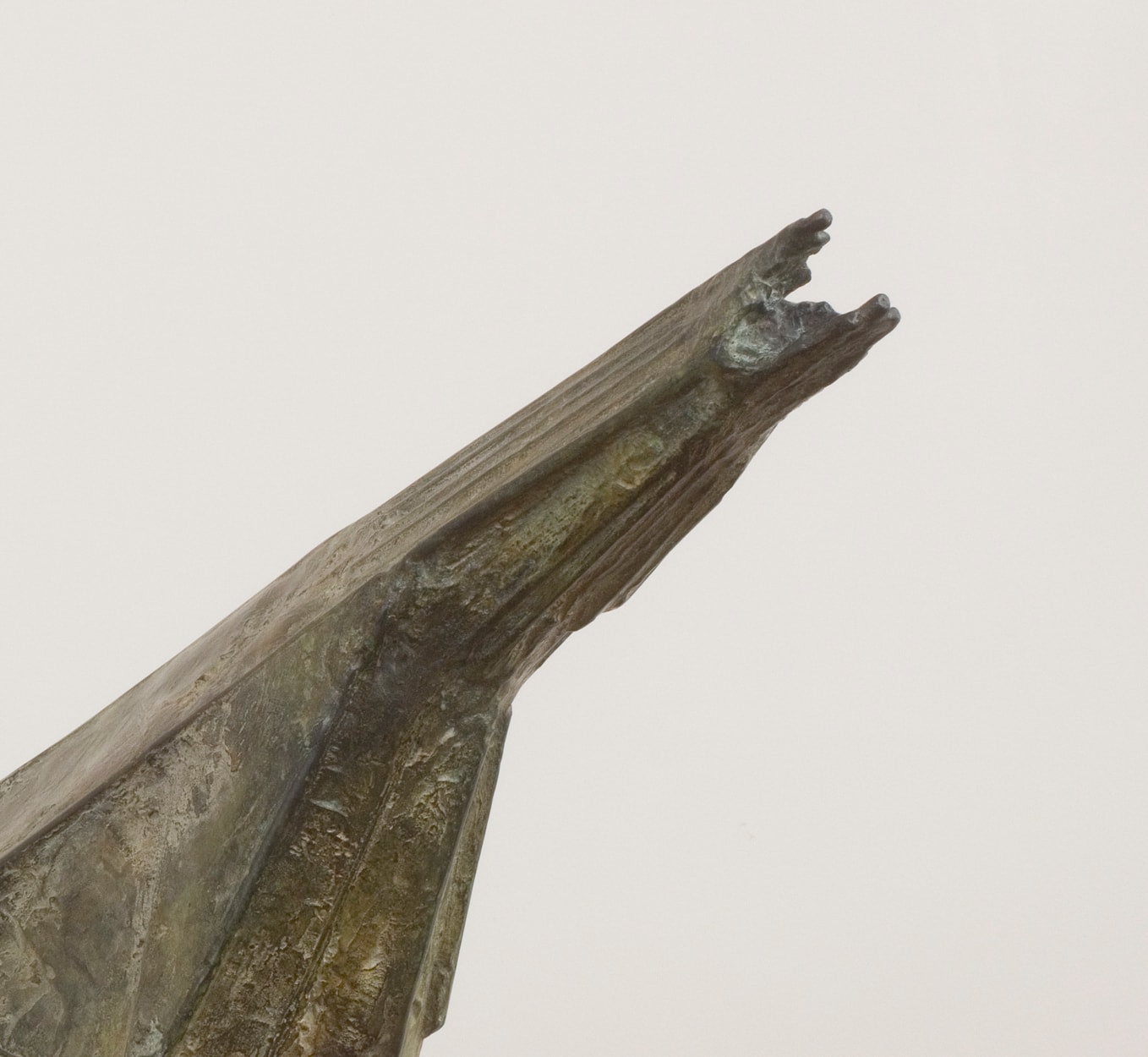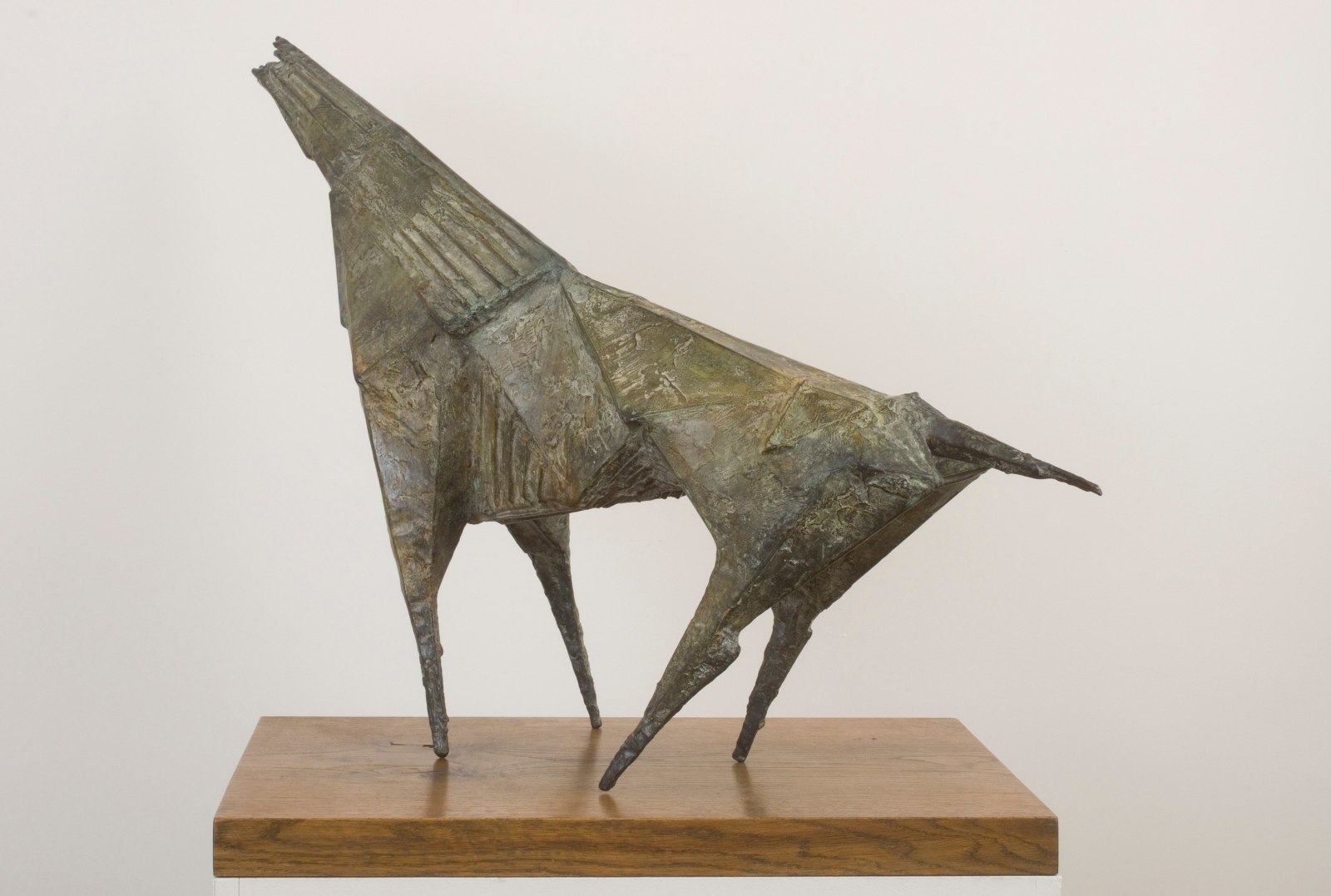Like many artists of his generation, the sculptor Lynn Chadwick instilled his work with a mood of trauma and struggle. His depiction of wild animals speaks to the human condition in a time of unease.
InSight No. 109
Lynn Chadwick, Beast VII, 1999
In light of the atrocities committed during the Second World War, many artists' perceptions of the world shifted irrevocably. Changed circumstances meant changes in art, with Adorno arguing that '[t]o write poetry after Auschwitz is barbaric'. Many artists sought to reinvent the human body, using it to communicate a sense of pain and anxiety. In his triptych Three Studies for Figures at the Base of a Crucifixion, Francis Bacon famously painted the right-hand creature caught in a desperate, jaw-wrenching scream. The image expressed both the strength and inarticulacy of many people's horror, perhaps also the artist's, and it became an influential topos in the period of British art inaugurated in April 1945 when the triptych was first exhibited.
One artist who answered Bacon's scream was Lynn Chadwick (1914-2003). His work Beast VII has a dog-like body and a bird-like mouth. This beast is a 'monster' in the medieval sense, bringing together two or more animal forms in one unfamiliar body. Tellingly, like Bacon's 'Figures', Chadwick's 'Beasts' are nameless: their existence is uncultured and their identity undefined. Beast VII strains forward, the coiled energy of the form channelling into an extended beak which exists where a head should be. Two jaws are wrenched open, screeching into the void. It is deaf and blind, being without ears or eyes, but it is not dumb, its noiseless bark uttered in a state of apparent distress or confusion.

For Chadwick, Bacon's scream was a touchstone, not a lodestar. His creative sources came from a variety of cultures and a deep well of history. His first 'Beast' sculpture was made in 1955 and, as the art historian Dennis Farr has suggested, drew its inspiration in part from the Avenue of the Lions on the Greek island of Delos. The Canadian writer Margaret Doody has described the lions as 'very ancient and very odd. They are all in the same posture but each one is different - you can see details of their ribs, their manes and tails. They roar in their silent marble power'. Chadwick identified in these pre-Classical Greek monuments a mood of austere terror, which he transformed into an original sculptural statement of his own.

Beast VII was first made in 1956 as a unique sculpture. It was among Chadwick's earliest works to use the industrial material 'Stolit' (see InSight 73). Chadwick returned to the sculpture in 1999, conceiving an edition of nine works cast in bronze. The work shown here is the first work from the edition. By this time, Chadwick had come to work exclusively with Rungwe Kingdon and Claude Koenig, whose company Pangolin Editions is one of the most distinguished bronze foundries for art in the UK (see InSight 107). This cast of Beast VII has a green patina verging on the colour and texture of rust. The surface has been worked over with finely grained scrapes and oil stains and contains a world of detail that ingeniously simulates the Stolite of the 1956 sculpture.

There are no fewer than sixty-two works by Chadwick in UK public collections, and all of these have recently been made available online as part of the Art UK Sculptureproject. Following the highly successful ambition to digitise every publicly owned painting, the ArtUK website started publishing sculpture in 2019. To date, over fifty-thousand works of sculpture have been made accessible to view on the website. Chadwick is one of the most original sculptors of the twentieth century and the increased exposure of his work only renders this fact more apparent.

Images:
Lynn Chadwick, Beast VII, conceived 1956, cast 1999 by Pangolin Editions, bronze, length 112 cm | For Sale
Beast VII (detail)
The Avenue of the Lions at Delo
Lynn Chadwick, Beast VII
Sculpture on the ArtUK website


